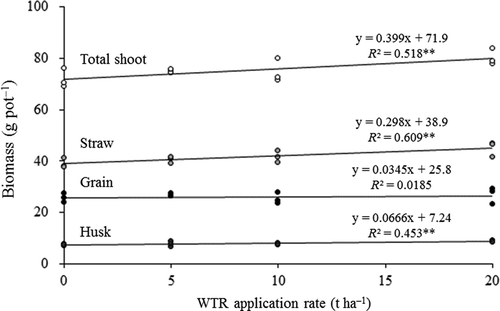Figures & data
Table 1. Time course of the concentrations of dissolved arsenic (As), iron (Fe) and silicon (Si) in soil solution during the cultivation period.
Table 2. Simple linear regression analyses for dissolved arsenic (As), iron (Fe) and silicon (Si) (Y) against water-treatment residue (WTR) application rate (X).
Table 3. Time course of the decrease percentage of dissolved arsenic (As) concentration by water-treatment residue (WTR) application and two-way repeated measures analysis of variance (ANOVA)
Figure 1. Simple linear regressions for rice grain, husk, straw and total shoot biomass against water-treatment residue (WTR) application rate.

Table 4. Concentrations and contents of arsenic (As) and silicon (Si) in rice (Oryza sativa L.) tissues and simple linear regression analyses for As and Si in rice (Oryza sativa L.) tissues (Y) against water-treatment residue (WTR) application rate (X).

